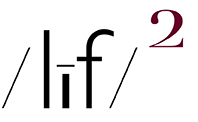"Why are photos of ordinary objects or places in our environment more interesting in photographs than in real life?"
ON A RECENT T.O.P. ENTRY MIKE JOHNSTON WROTE that his well had run dry, re: photography-related topics to write about. So he requested that readers ask photography-related questions-under the rubric of Ask Mike-which might jump-start his keyboard fingers a-dancin’.
One question that caught my attention was the one at the top of this entry.That’s cuz for a couple weeks past I have been contemplating the writing of an entry which addressed essentially the same topic; why is it that I can look at-in fact, be mesmerized by-one of my pictures for an extended period of time (over multiple viewings) and yet, when making such a picture, typically, I just see it, activate the shutter (real or virtual), and move on? Which is to write that I rarely hang around and admire / contemplate the “view”.
To my eye and sensibilities, this question is not one that causes me to struggle to come up with an answer. That’s cuz, to paraphrase Stephen Shore, I am a serious photographer who understands that there is a difference between the world and how world looks when photographed.
iMo, there are 3 things-amongst several others-which make a photograph of the ordinary interesting to view and which constitute the “difference” between the world and how its looks photographed; time, dimensionality, selective isolation.
re: time: intrinsic to the medium, a photograph records a moment in time. In effect, stopping time and preserving it for all time. Stopping time gives the eye and mind the ability to focus on the thing depicted without-in the viewing of a photograph-the “distraction” of motion (and sound). It could be written that photographs are truly time-less.
re: dimensionality: again, intrinsic to the medium, while we see the world in 3D, a photograph of the world presents the world to the eye as a 2D object. That characteristic of a photographic print makes it possible for a photograph to accentuate / emphasize, across the flat field of a print, the visual essence-independent of but integral to the depict referent(s)-of line, shape, space, value, and color, aka: the elements of art.
The above 2 items are petty much universally understood by most serious photographers, although a significant number to do get tripped up by the 2D v 3d thing. However, items # 3 is were the rubber meets the road, re: why a photograph of the world can be more interesting than the world itself….
“A photograph has edges. The world does not.” ~ Stephen Shore
re: selective isolation: a photograph always depicts an isolated segment of the world. While that characteristic is, indeed, intrinsic to the medium, it is the picture maker who determines the frame to be imposed on a given segment of the world and that decision is not intrinsic to the medium. Rather, it is intrunsic to a picture maker’s vision and craft. And, it is that framing which isolates and emphasizes the organizational arrangement of the visual elements to be seen in a photograph within the imposed frame.
To my eye and sensibilities, this question is not one that causes me to struggle to come up with an answer. That’s cuz, to paraphrase Stephen Shore, I am a serious photographer who understands that there is a difference between the world and how world looks when photographed.
iMo, there are 3 things-amongst several others which make a photograph interesting to view-that make up the “difference” between the world and how its looks photographed; time, dimensionality, selective isolation.
re: time: intrinsic to the medium, a photograph records a moment in time. In effect, stopping time and preserving it for all time. Stopping time gives the eye and mind the ability to focus on the thing depicted without-in the viewing of a photograph-the “distraction” of motion (and sound). It could be written that photographs are truly time-less.
re: dimensionality: again, intrinsic to the medium, while we see the world in 3D, a photograph of the world presents the world to the eye as a 2D object. That characteristic of a photographic print makes it possible for a photograph to accentuate / emphasize, across the flat field of a print, the visual essence-independent of but integral to the depict referent(s)-of line, shape, space, value, and color, aka: the elements of art.
The 2 items above are universally pretty much understood by most serious photographers, although a significant number to do get tripped up by the 2D v 3d thing. However, item # 3 is were the rubber meets the road, re: why a photograph of the world can be more interesting to view than the world itself….
“A photograph has edges. The world does not.” ~ Stephen Shore
re: selective isolation: a photograph always depicts an isolated segment of the world. While that characteristic is, indeed, intrinsic to the medium, it is the picture maker who determines the frame to be imposed on a given segment of the world and that decision is not intrinsic to the medium. Rather, it is intrinsic to a picture maker’s vision and craft. And, it is the application of that vision and craft which isolates and emphasizes the organizational arrangement of the visual elements within the imposed frame of a photograph.
iMo, it is the vision-driven act of seeing and framing-with the aid of time becoming motionless + the reductive act of distilling the 3D world down to the 2D world of a photographic print-that can raise a photograph of the ordinary to a level that incites ”a sensation of strangeness….a kind of shock non-recognition inside the familiar” (David Hurn) which encourages the viewer to be actively involved, aka: interested, in the viewing of a photograph of the ordinary.
